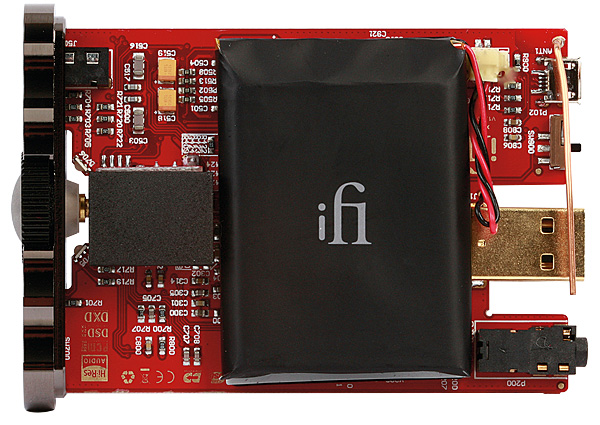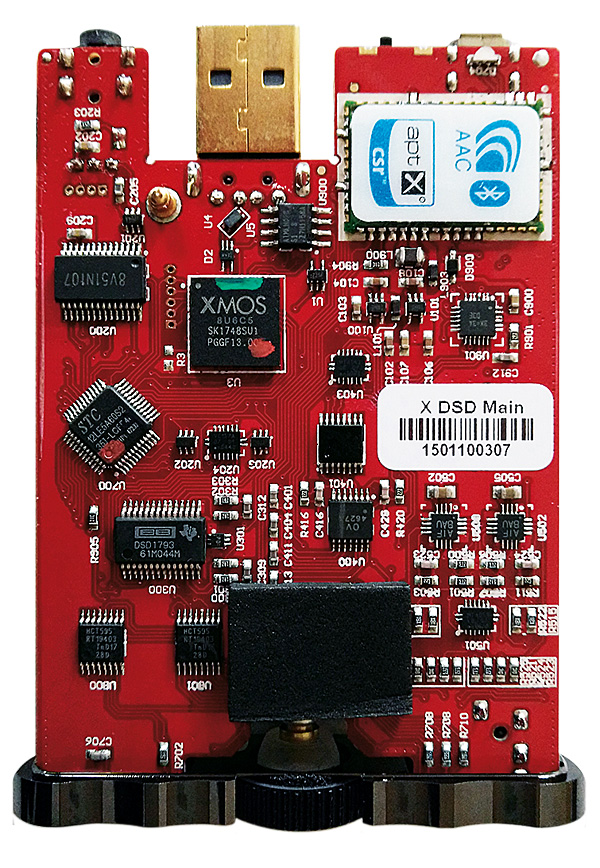iFi Audio Pro xDSD headphone amp/DAC Page 2
Delving Deep
I did feel, though, that the XBass+ option made little difference to the mid-bass on ‘Rapture’, so I delved into the deeper, electronic sounds of ‘Prime Evil’ by The Orb [Bicycles And Tricycles; Cooking Vinyl 0711297469820] to see how it handled some seriously deep bass.

Even unassisted, the xDSD delivered the track’s opening bass line with a deep, rumbling sound that drove the song forward with a sinuous, almost sinister, rhythm. Thankfully, the xDSD didn’t screw things up as I tapped to activate the bass effect, and it managed to avoid the exaggerated bass boom that’s currently fashionable with many headphone brands. The XBass+ effect is more calculated and precise, seeming to reach down to just the very lowest frequencies and gently bring them a little more into focus, but without overwhelming or unbalancing the midrange frequencies, or the light, shoulder-swaying percussion that floated above on this track.
Punch To The Jaw
Another tap on the Settings button on the front of the device adds the 3D+ effect as well. The vast, multi-tracked rondo of ‘The Prophet’s Song’ by Queen [A Night At The Opera, 2005 reissue; Parlophone 3 38457 2 5] provided the perfect soundstage here, and I was pleased also to have the chance to check out the MQA version of the song on Tidal by plugging the xDSD into my office computer. The echoing vocals sounded wonderfully crisp and clear, and precisely placed as they volleyed from left to right.

And, as the harmonies reached their shrieking climax – ‘listen to the mad maaan!’ – the xDSD landed Brian May’s power chords like a clean, sharp punch to the jaw. I’ve heard claims of ‘3D sound’ before, and they rarely amount to anything more than a gimmick, but the xDSD again managed to make a gentle but effective sound adjustment. As the Queen harmonies echoed back and forth, the sound over my Audio-Technica MSR7SEs seemed to shift physically just a little, rising up and then expanding out into the air, as though the earpieces were being held slightly higher and further apart than would be normal.
And, of course, if you really wanted to get a sense of space, you still had the option of using the xDSD with a conventional speaker system. Switching between ‘headphone’ and ‘line-out’ modes, I listened to the solo vocal of Kate Bush on ‘My Lagan Love’ [Hounds Of Love; EMI 7243-8-57978-2-8) rising effortlessly from my Opera speakers and filling the room with the warm, wistful tone of her voice as she sang of her lost love. It’s impressive to hear a sound of such richness and clarity emanating from such a tiny device and, on the same album, the xDSD proved equally deft with the dense avalanche of percussion that piles up on ‘The Big Sky (Meteorological Mix)’.
It managed to separate the cascading layers of drums admirably, preventing them from merging into sonic mush, and kept focus on the firm slap-bass – which can often just get drowned out when I’m listening via my smartphone.

Almost inevitably, the Bluetooth streaming isn’t in quite the same league, with music sounding a little less clear and open through both headphones and speakers. But that’s very much due to the limitations of the Bluetooth technology, rather than a criticism of the xDSD itself. It’s still useful to have that wireless option, and it demonstrated that the xDSD can challenge the mighty Chord Mojo on both sound quality and versatility.
Hi-Fi News Verdict
It’s not perfect – the limited battery life leaves some room for improvement – but the lightweight xDSD still packs a heavyweight punch. Its slimline design is ideal for travelling, and includes features that few of its rivals can match, including Bluetooth connectivity that’s useful at home and on the road. But it’s the sheer sound quality on offer that earns it a place at the forefront of this competitive field.

























































